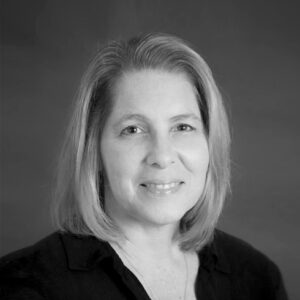Virtual Nightmare: One Student’s Journey Through the Pandemic
Jason Finuliar was a popular, gifted student. His descent into suicidal depression — and ongoing recovery — reflects the lingering trauma of lockdown
By Linda Jacobson | November 15, 2022In a black suit and red bowtie, his smile full of braces, Jason Finuliar stands by a fountain on the Santa Clara University campus as his mother snaps a photo. It was December 2018, and the promising young speech competitor had just placed fourth in a California tournament, qualifying him for nationals.
“It was literally the best I’ve ever done,” he said, remembering how such moments fueled big ambitions for life after high school. “Half the fun was … getting to perform at some college that I even thought about going to — like Stanford or Berkeley.”
But less than two years later, the smile had faded — and so had the dreams. Just weeks into remote learning in the spring of 2020, Jason stopped attending class at American High School in Fremont. By the middle of the following year, he had descended into academic failure and depression. After months in which he had trouble getting out of bed, plagued by thoughts of suicide, he spent 10 days in a residential mental health facility.
“I felt so worthless,” he said. “I had no clue when things were going to go back to normal.”
As scholars debate the pandemic’s effect on lost learning and student well-being, Jason’s story is a reminder of the suffering millions of young people experienced when they were no longer tethered to school. Cut off from friends, teachers and extracurricular activities, students reeled from the effects of school closures. And the aftershocks continue: Into early 2022, emergency rooms were still seeing spikes in students admitted for eating disorders, depression and suicidal behavior.
“Connection to one another is a core need for all of us. Having that stripped away is traumatizing,” said Karen Larsen, CEO of the Steinberg Institute, a Sacramento-based think tank focusing on mental health. She added that while some teens quickly bounced back, others “may never fully recover from what they have lived through these past few years.”
The shutdown
Another snapshot, also pre-pandemic: A laughing Jason is carried by a friend in student council. They’re wearing pajamas, part of a promotion for a school movie night.

Typical Jason, thought his mother, Carol Finuliar. She posted on Facebook: “My son does not have a self-conscious gene.”
He was popular — and gifted. In sixth grade, he got 1,150 on an SAT practice test, a competitive score even for students much older.
By sophomore year, he was active in student council and president of the speech and debate club at his school in the 33,000-student Fremont Unified district. When the pandemic shuttered classrooms in March 2020, he was a kid whose “identity was tied to school,” Carol said.
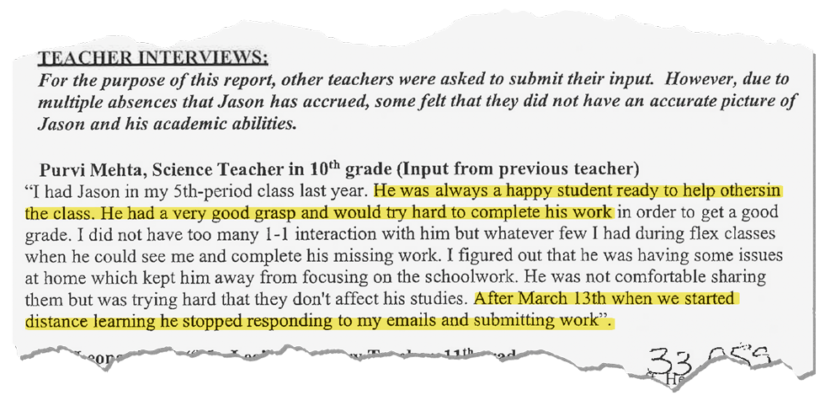
Like most students in the Bay Area district, Jason faced lockdown with a mixture of shock and relief: He looked forward to an extended spring break. At first, he participated in Zoom classes and tried to have a “cool background” on his screen to stand out.
But, as a teacher noted in comments later used to evaluate him for special education, and shared by his parents with The 74, Jason quickly disconnected from school.
“He was always a happy student ready to help others in the class,” wrote Purvi Mehta, Jason’s 10th-grade life sciences instructor. “After March 13, when we started distance learning, he stopped responding to my emails and submitting work.”
Over time, Jason started thinking no one cared whether he made the effort. Rolling out of bed right before class, he grew self-conscious.
“My hair is sticking up, and I’m wearing the same shirt for days on end,” he said. “I didn’t really feel like I was even in school. It felt like I was watching this movie on repeat, and I wasn’t necessarily enjoying this movie.”
Like schoolwork, Jason’s favorite outlet — speech — went virtual. That, too, felt dispiriting. In junior high, he rehearsed speeches every day, starting a few weeks before a tournament, and practiced in front of friends and family.
A favorite selection was a one-man show in which he acted out a scene of a boy and girl running for class president, altering his voice to play each character.
But as competitions went remote, Jason found it too easy for students to cheat because they could read a “script” on screen and record their entries.
All of this ran counter to what he loved about speech: the thrill of delivering a well-prepared address before a live audience.
“That was the point of competition,” he said.
‘I thought he was being lazy’
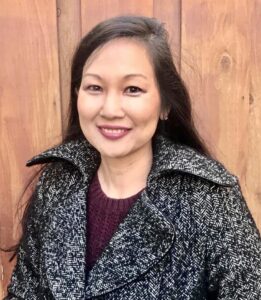
Jason also lost motivation in other aspects of his life. By the summer of 2020, he had stopped taking care of Cookie, the family’s 3-year-old shih tzu, and doing other chores. Increasingly frustrated, Carol sent him to stay for a month with her brother in Sacramento.
“I just thought he was being lazy,” she said. She and her husband felt “blindsided” by their son’s struggle. “I didn’t know that you don’t choose to be depressed. I didn’t understand that at all.”
In fact, she initially worried more about Jason’s younger sisters, Julia and Cherie, who are more reserved than their outgoing brother. Julia, now a senior at American, said she actually found school easier online and “way more relaxed.”
Jason, for his part, doesn’t remember a single argument that led to his ejection from the house — just that his mother “yelled at [him] for random stuff.”
When he returned home in the fall and again refused to participate in remote classes, Carol made him get a job.
That turned out to be a blessing.
Taking orders and making chalupas at Taco Bell funded his love of Nintendo Switch games like Minecraft and Mario Kart. Streaming games to Twitch, an interactive online platform, linked him to other players. In those moments, he felt less alone.
And working fulfilled his need to interact with people in person. His mother remembers: The days he worked were the only times he got out of bed.
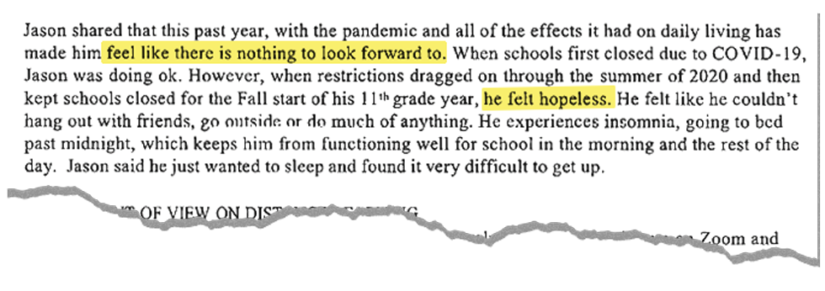
He also looked forward to sessions with Yvette Helmers, a school psychologist for the district and the only staff member to see him in person. At school, they talked about his anxiety. In psychology-speak, she said Jason experienced an “embedded level of maladaptive perfectionism.” Avoiding stressful situations, for fear he couldn’t control the outcome, only made them harder to face.

“He felt like, ‘What’s wrong with me? Why can’t I manage this? I’m just supposed to go to school,’ ” she said. His response to closures, she added, was not atypical.
Jason’s decline from A and B sophomore to clinically depressed teen is a reminder that even students who had sailed through school and lived relatively comfortable, middle-class lives didn’t escape COVID’s gauntlet. But they also enjoy privileges many students do not. They typically have access to quality medical care and parents with the time and financial security to care for them. Scholars studying how prolonged school closures continue to affect students say the damage to learning was far worse in high-poverty communities and for those who were already struggling.
By contrast, the median household income in Fremont is $142,000, roughly twice the statewide average. The district serves a majority Asian population, where many parents work in the tech sector for familiar brands like Apple and Tesla. In 2018, Meta’s Facebook expanded into a research and development hub not far from Jason’s high school. His father, Jesse, works as a computer programmer and networking engineer.

Growing up in a Filipino-American family, Jason lived with high expectations. Carol, a self-described “tiger mom,” enrolled him in SAT prep classes in elementary school and, the summer after his freshman year, placed him in a community college astronomy class taught by a former NASA engineer.
A doctor later suggested that maybe Carol was pushing him too hard. At the time, she was offended.
Such behavior is by no means unique. “Fremont is a very high-performing district,” Helmers said. “Students already have a high level of depression. People say, ‘They have everything — access to tutors, technology. Why would they not do well?’ ”
But beneath the high GPAs and extracurricular activities, she said, is often an unhealthy pattern of behavior — staying up past midnight and going to school sleep-deprived. By the time the pandemic began, she said, “they were already taxed.”
Thoughts of suicide
Midway through the school year, Jason’s mental state worsened. On his 17th birthday, Jan. 21, 2021, Carol made pancakes with whipped cream and berries — his favorite. But he didn’t get out of bed.
Jason began to think — and dream — about suicide. In one recurring nightmare, he stepped off the end of a pier. By day, he thought of jumping off the Dumbarton Bridge, which connects Fremont to Palo Alto over San Francisco Bay.
He told a doctor he had placed a metal coat hanger in the closet around his neck to see if it would support his weight. It didn’t.
The situation was serious enough that a psychiatrist referred him to Sunol Hills — a single-story house in a residential area of Fremont converted into a treatment facility for youth with behavioral health problems. In a recurring theme, his stay there wasn’t a dark period he’d like to forget, he said; rather, it filled a deep need for human contact.
“It felt nice to be around people my age,” Jason said. “I felt understood.”
He had his own room and went to sleep to the sound of a passing train. During the day, patients took supervised walks through the neighborhood and played card games like Mao.
As nourishing as the experience felt, Jason said he never forgot where he was. After the games, staff locked up the cards because some teens had a history of cutting themselves.
There were no hangers in the closet.
‘Fighting against everything’
Meanwhile, Carol put aside hopes for college scholarships and honed her advocacy skills. A workers’ compensation attorney for the state, she took off as many as four days a week to “deal with the school and get him treatment.”
By March 2021, roughly 43% of schools nationwide remained closed or offered a hybrid split between remote and in-person learning, according to the Center on Reinventing Public Education, a think tank that tracked school closures. Brown University economist Emily Oster’s recent analysis of test data in several states confirms those with less access to in-person learning saw drops in proficiency as high as 20 percent.
California schools were among the last to reopen, and Jason’s district finished out the 2020-21 school year online.
Carol attended regular school board meetings, fired off lengthy emails to administrators with links to research about learning loss and pushed officials to evaluate Jason for special education services to alleviate his depression. She hoped to ease Jason back into school by getting him more time on tests and the ability to skip missed assignments.
In doing so, she got a glimpse of the bureaucratic morass so many parents with children in special education face. A “student study team” first met in January 2021 to take up the family’s request. But it wasn’t until May, just weeks before the end of the school year, that the team determined Jason was eligible for an individualized education program, or IEP — a plan that outlined the additional services and accommodations he would receive.
The report determined that “the situational factors of the pandemic cannot be ruled out as contributors to his mental health and academic performance.”
Despite her activism, Carol felt helpless as neighboring districts gradually implemented hybrid schedules.
She saw other families flee the district for private schools.
Some left the state.
Fremont parent Nely Rojas-Matteo helped organize an unsuccessful lawsuit to force an in-person option that spring, but soon moved with her family to Florida, where schools were open.
“We were fighting against everything and everyone,” she said.
But the situation in Fremont complicates a pandemic narrative that typically pits angry parents against reluctant educators. Rojas-Matteo said it was hard to get the district’s “risk-averse” families on board with reopening, even after local pediatricians said it was safe for students to return and warned of “grave mental health problems” if they didn’t.
Nationally, Asian families were the most hesitant to resume in-person learning, a fact researchers attribute to a combination of COVID caution and fears of harassment linked to the virus’s origin in China. Even in Fremont, an Asian woman and her 10-year-old daughter were taunted with chants of “Go back to China” by a neighbor in October 2020.
In an email to The 74, Fremont Superintendent C.J. Cammack insisted the district “centered the well-being of our students and staff at every turn in the decision-making process.”
For example, Fremont opened some classrooms for on-site learning in March 2021 and added “wellness centers” at high schools that fall.
But the in-person hubs turned out to be classrooms where students sat together while teachers remained virtual. Jason found the scene “chaotic” and asked not to return.
Helmers, the school psychologist, described the wellness centers as places where students can read, paint, drink tea or “sit and do nothing.” However, neither Jason nor his sister Julia said they knew anything about the center at their high school.
In the push to reopen, several California districts took advantage of incentive pay from the state and reached agreements with unions for teachers to return. Not Fremont. By the end of that March, Cammack — appointed just before the 2020-21 school year — announced that talks with the union had broken down.
The union blamed the district for the failure to find “middle ground” and said teachers “carried the weight” of knowing that most parents weren’t even interested in returning to in-person learning before the end of the year.
Brannin Dorsey, current president of the 1,700-member Fremont Teachers Association, wasn’t in charge then.
And she’d rather not play “armchair quarterback and critique how it could have been done differently,” she told The 74.
“I think the entire nation is thinking about that.”
‘Genuinely wanted … my diploma’
As the school year drew to a close, Jason grew so desperate to escape the daily pressure of signing on to Zoom that he was prepared to leave high school for good. In his IEP evaluation, he told educators he “saw no value” in remote learning. He took the high school equivalency exam — an option far more typical of students who have already dropped out.

For Carol, the test offered a final “ticket out” of regular calls about Jason’s truancy.
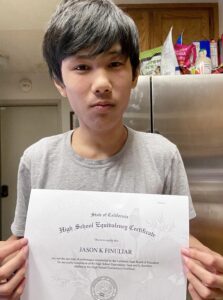
He passed the exam — remotely — despite panicky feelings over a proctor watching him on camera. A picture Carol took of him holding his certificate offers almost a reverse image of the happy kid in the snapshot from two years earlier. Standing in the kitchen, hair almost covering his eyes, he looks defeated.
“It was heartbreaking,” she said. “It was such an accomplishment, but he couldn’t celebrate or find anything to be proud of.”
Something was missing. For a student who had once been so immersed in school, he still felt driven to stay on a traditional path toward graduation. When American reopened in person last fall, his friends persuaded him to return for senior year.
“I genuinely wanted to get my diploma from that school,” he said.
But he remained emotionally fragile. One teacher refused to give him more time on tests, as his IEP stipulated. He came home in tears the Thursday before Halloween and didn’t join friends going out in costume. By Monday, Carol told the school he wouldn’t be coming back.
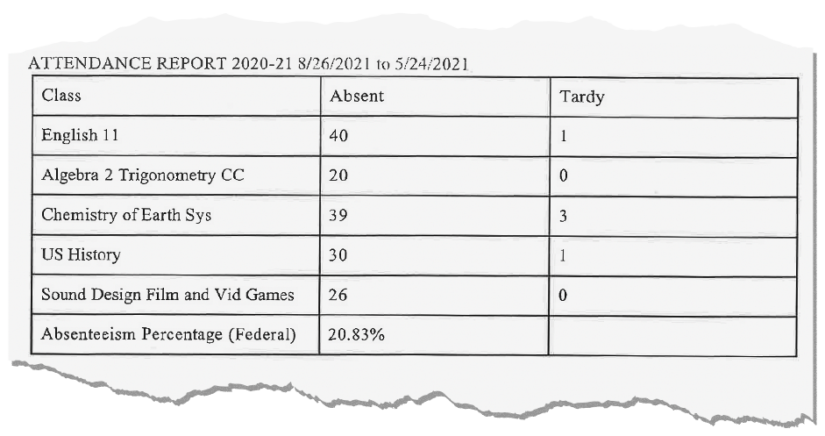
Post-high school, he worked at a grocery store — hours that Carol believes contributed to his healing — and spent spare time playing Pokémon with friends he made at a comic book shop near his old junior high.
Carol didn’t let up on making sure he enrolled in school somewhere. But the thought of entering college only reminded him why he had left American. Jason worried professors wouldn’t make accommodations for him. During the summer, he said, he still needed “time to work through the trauma.”
A student accessibility office at Ohlone, a community college in Fremont, gave him the time and space to do that. Over the course of several visits to the campus, counselors broke down the admissions process into small steps and assured him that instructors would consider his needs. In late July, he registered for the fall semester. Carol said she “nearly cried.”
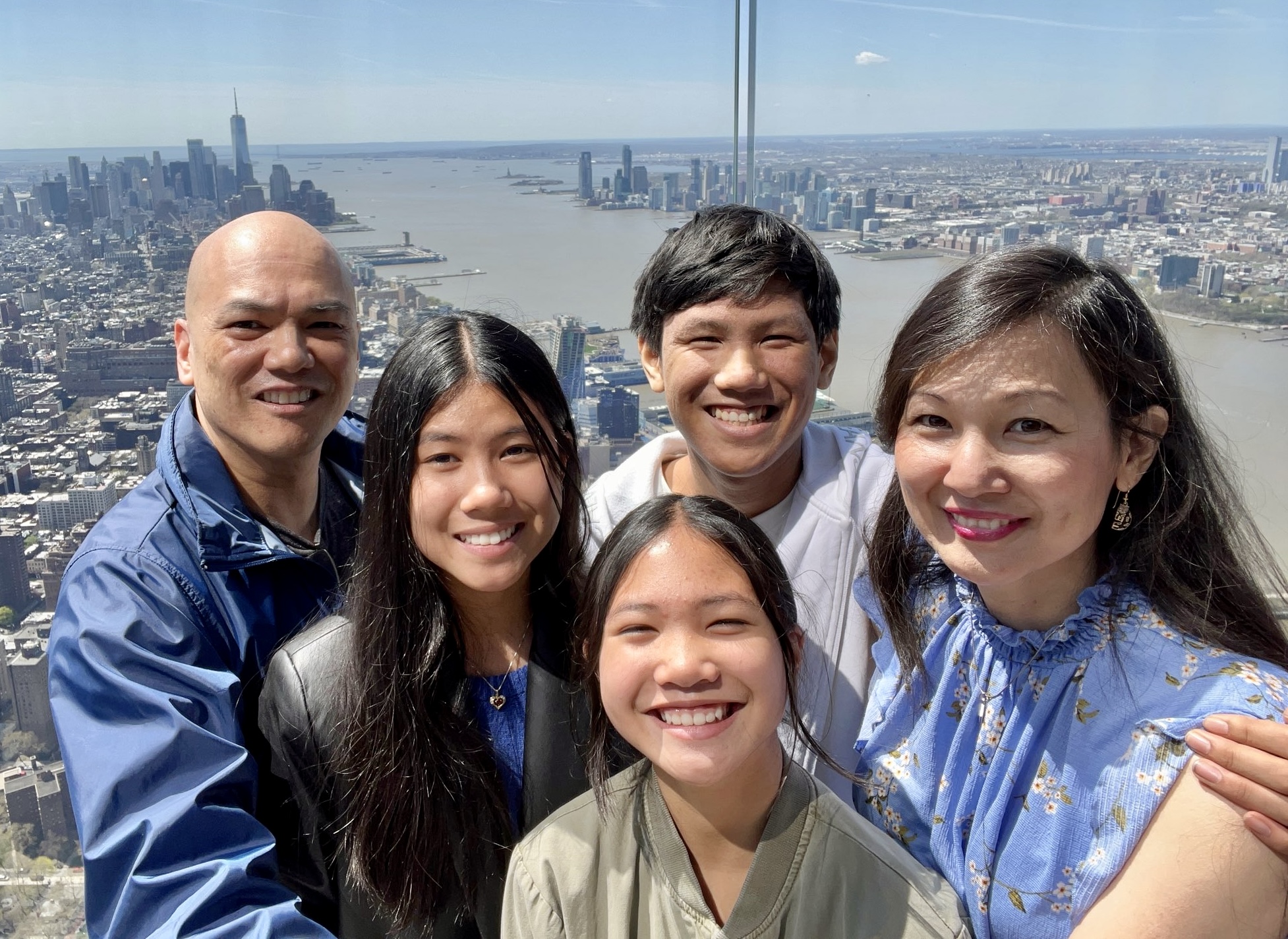
On Aug. 29, his father made him a breakfast burrito and Jason reported to class.
In looking back at her son’s two-year ordeal, Carol remains bewildered by how quickly school closures knocked Jason off course. Despite her disappointment that he’s not attending a traditional university this fall, she has learned to focus on his happiness.
“We are all a little bit more aware of mental wellness,” she said. “It is so hard to accomplish anything when you’re depressed. The healing process is so slow, it’s painful.”
Carol believes that Jason no longer feels like a failure, but still worries “one little obstacle will set him off.”
His progress, while visible, is far from linear. Relearning study habits hasn’t been easy. Sometimes, he procrastinates on assignments and skips class.
Carol tells him to break up homework into one-hour increments and often sits with him in his room to get it done. He especially enjoys his Japanese class, and a county rehabilitation agency is helping him look for a new job.
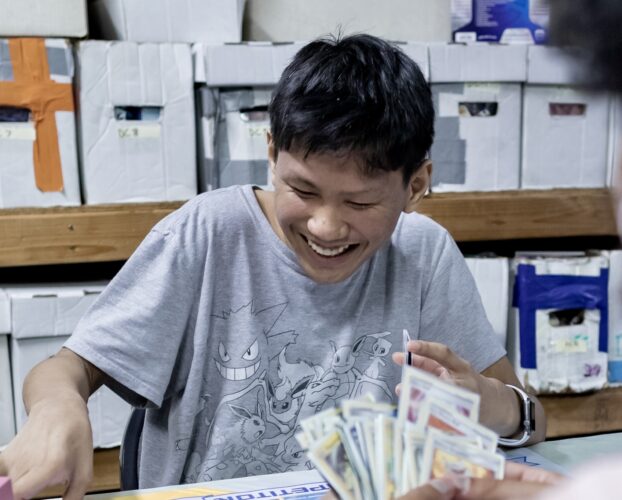
For Jason, there’s solace in knowing he’s not alone. A friend in his early morning English class recently opened up about feelings of anxiety.
“It’s kind of comforting knowing that he’s sharing with me what he’s going through,” he said.
When his own dark thoughts return, Jason remembers he’s “been through so much worse.” And he’s in a counseling program at Ohlone that will give him a better shot at transferring into highly competitive Berkeley — a goal he’s rekindled.
“There’s much more that I want to accomplish.”
Get stories like these delivered straight to your inbox. Sign up for The 74 Newsletter

